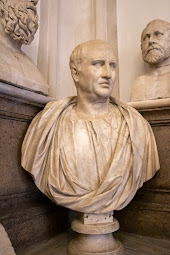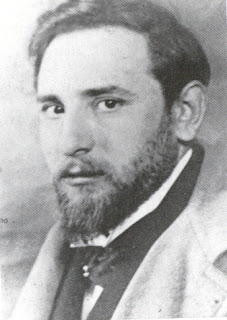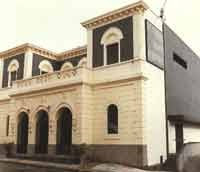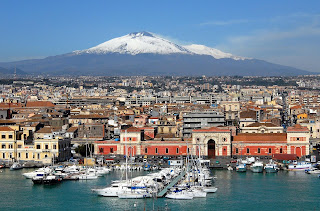NEW - Marcus Tullius Cicero – statesman, scholar and writer
The brutal beheading of a great Roman politician and orator
Cicero, the last defender of the Roman Republic, was assassinated on this day in 43BC in Formia in southern Italy. Marcus Tullius Cicero had been a lawyer, philosopher and orator who had written extensively during the turbulent political times that led to the establishment of the Roman Empire. In the months following Julius Caesar's assassination in 44BC, Cicero had delivered several speeches urging the Roman Senate to support Octavian, Caesar’s adopted son, in his struggle against Mark Antony. Cicero attacked Antony in a series of powerful addresses and urged the Roman senate to name Antony as an enemy of the state. Antony responded by issuing an order for Cicero to be hunted down and killed. He was the most doggedly pursued of all the enemies of Antony whose deaths had been ordered. Cicero was finally caught on 7 December 43BC leaving his villa in Formia in a litter - a kind of Sedan chair - heading to the seaside. Cicero is reported to have said: “I can go no further: approach, veteran soldier, and, if you can do at least do so much properly, sever this neck.” He leaned his head out of the litter and bowed to his captors who cut off his head. Read more…
_______________________________________
Giovanni Battista Falda - engraver
Printmaker who found market among Grand Tourists
The engraver and printmaker Giovanni Battista Falda, who turned his artistic talent into commercial success as 17th century Rome welcomed the first waves of Europe’s Grand Tourists, was born on this day in 1643 in Valduggia in Piedmont. Falda created engravings depicting the great buildings, gardens and fountains of Rome, as well as maps and representations of ceremonial events, which soon became popular with visitors keen to take back pictorial souvenirs of their stay, to remind them of what they had seen and to show their friends. He took commissions to make illustrations of favourite views and of specific buildings and squares, and because the early Grand Tourists were mainly young men from wealthy families in Britain and other parts of Europe he was able to charge premium prices. Falda showed artistic talent at an early age and was apprenticed to the painter Francesco Ferrari as a child, before moving to Rome when he was 14 to be mentored by Gian Lorenzo Bernini, the sculptor and architect who had such a huge influence on the look of Rome. His early draughtsmanship caught the eye of the printmaker and publisher Giovan Giacomo De Rossi. Read more…
____________________________________
Azzone Visconti - ruler of Milan
Nobleman who used family power to bring prosperity to the city
Azzone Visconti, a nobleman sometimes described as the founder of the state of Milan and who brought prosperity to the city in the 14th century, was born on this day in 1302 in Ferrara. The Visconti family ruled Lombardy and Milan from 1277 to 1457 before the family line ended and, after a brief period as a republic, the Sforza family took control. Azzone was the son of Galeazzo I Visconti and Beatrice d’Este, the daughter of the Marquis of Ferrara. Galeazzo was descendant from Ottone Visconti, who had first taken control of Milan for the family in 1277, when he was made Archbishop of Milan by Pope Urban IV but found himself opposed by the Della Torre family, who had expected Martino della Torre to be given the title. Ottone was barred from entering the city until he defeated Napoleone della Torre in a battle and, apart from a brief period in which forces loyal to Guido della Torre drove out Galeazzo’s father, Matteo, the Visconti family held power for the next 170 years. A crisis faced the Visconti rule in 1328 when Louis IV, the Holy Roman Emperor – known in Italian as Ludovico il Bavaro – had Galeazzo and other members of the family arrested. Read more…
________________________________________
Gian Lorenzo Bernini – sculptor and architect
Italy's last universal genius
Gian Lorenzo Bernini, who was considered the greatest sculptor of the 17th century, was born on this day in 1598 in Naples. Bernini developed the Baroque style, leading the way for many other artists that came after him. He was also an outstanding architect and was responsible for much of the important work on St Peter’s Basilica in Rome. Bernini began his career working for his father, Pietro Bernini, a Florentine who moved to live and work in Rome. The young Bernini earned praise from the painter Annibale Carracci and patronage from Pope Paul V and soon established himself as an independent sculptor. His early works in marble show his amazing ability to depict realistic facial expressions. Pope Urban VIII became his patron and urged Bernini to paint and also to practise architecture. His first major commission was to remodel the Church of Santa Bibiana in Rome. Bernini was then asked to build a symbolic structure over the tomb of Saint Peter in Rome. The result was the immense gilt-bronze baldachin executed between 1624 and 1633, an unprecedented fusion of sculpture and architecture and the first truly Baroque monument. Read more…
_____________________________________
Feast of St Ambrose in Milan
Celebrating the life of a clever and fearless Bishop
The feast day of Milan’s patron saint, St Ambrose (Sant’Ambrogio), is celebrated in the city on this day every year. A service is held in the Basilica di Sant'Ambrogio to mark the saint's day on December 7. The day is an official public holiday in Milan. Banks, government offices and schools are closed along with some shops. Public transport may also be restricted. A service is held in the Basilica di Sant’Ambrogio, the church built by Ambrose himself. The date also marks the opening of the traditional 'Oh Bej! Oh Bej!' street market, with stalls selling local food, wine and crafts. Aurelius Ambrosius was born in the year 340. He trained as a lawyer and was a great orator before becoming Bishop of Milan in response to popular demand. After his ordination he wrote about religion, composed hymns and music and was generous to the poor. He stood up to the supporters of the alternative Arian religion, who wanted to take over some of Milan’s churches, and he also told a Roman Emperor what he had done wrong and how to atone for his sins. A famous piece of advice that he gave to his congregation was to follow local liturgical custom rather than to argue against it. Read more…
_____________________________________
Book of the Day: Cicero: The Life and Times of Rome's Greatest Politician, by Anthony Everitt
He squared off against Caesar and was friends with young Brutus. He advised the legendary Pompey on his botched transition from military hero to politician. He lambasted Mark Antony and was master of the smear campaign, as feared for his wit as he was for his ruthless disputations. Brilliant, voluble, cranky, a genius of political manipulation but also a true patriot and idealist, Cicero was Rome's most feared politician, one of the greatest lawyers and statesmen of all times. In Cicero: The Life and Times of Rome's Greatest Politician, Anthony Everitt plunges us into the fascinating, scandal-ridden world of ancient Rome in its most glorious heyday - when senators were endlessly filibustering legislation and exposing one another's sexual escapades to discredit the opposition. Accessible to us through his legendary speeches but also through an unrivalled collection of unguarded letters to his close friend Atticus, Cicero comes to life as a witty and cunning political operator, the most eloquent and astute witness to the last days of Republican Rome. The Washington Post said that ‘[Everitt] made his subject - brilliant, vain, principled, opportunistic and courageous - come to life after two millennia.’Anthony Everitt, visiting professor in the visual and performing arts at Nottingham Trent University, has written extensively on Roman and Greek history, including biographies of Hadrian, Augustus and Alexander the Great. He has served as secretary general of the Arts Council of Great Britain. He lives near Colchester, England's first recorded town, which was founded by the Romans.
_-_Palazzo_Nuovo_-_Musei_Capitolini_-_Rome_2016.jpg)


.JPG)





.png)



.jpg)



.jpg)

%20(1).jpg)
_Italian_violinist,_composer,_music_theorist.jpg)


.jpg)
.jpg)
.jpg)



.jpg)

.jpg)








